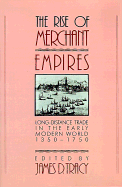Book contents
- Frontmatter
- Contents
- Preface
- Maps
- Introduction
- 1 Structural changes in European long-distance trade, and particularly in the re-export trade from south to north, 1350–1750
- 2 The growth and composition of trade in the Iberian empires, 1450–1750
- 3 The growth and composition of the long-distance trade of England and the Dutch Republic before 1750
- 4 France, the Antilles, and Europe in the seventeenth and eighteenth centuries: renewals of foreign trade
- 5 Productivity, profitability, and costs of private and corporate Dutch ship owning in the seventeenth and eighteenth centuries
- 6 The Dutch and English East India companies compared: evidence from the stock and foreign exchange markets
- 7 World bullion flows, 1450–1800
- 8 Merchant communities, 1350–1750
- 9 Economic aspects of the eighteenth-century Atlantic slave trade
- 10 Marginalization, stagnation, and growth: the trans-Saharan caravan trade in the era of European expansion, 1500–1900
- 11 The “decline” of the central Asian caravan trade
- 12 Merchant communities in precolonial India
- 13 Merchants without empire: the Hokkien sojourning communities
- Index
2 - The growth and composition of trade in the Iberian empires, 1450–1750
Published online by Cambridge University Press: 01 June 2011
- Frontmatter
- Contents
- Preface
- Maps
- Introduction
- 1 Structural changes in European long-distance trade, and particularly in the re-export trade from south to north, 1350–1750
- 2 The growth and composition of trade in the Iberian empires, 1450–1750
- 3 The growth and composition of the long-distance trade of England and the Dutch Republic before 1750
- 4 France, the Antilles, and Europe in the seventeenth and eighteenth centuries: renewals of foreign trade
- 5 Productivity, profitability, and costs of private and corporate Dutch ship owning in the seventeenth and eighteenth centuries
- 6 The Dutch and English East India companies compared: evidence from the stock and foreign exchange markets
- 7 World bullion flows, 1450–1800
- 8 Merchant communities, 1350–1750
- 9 Economic aspects of the eighteenth-century Atlantic slave trade
- 10 Marginalization, stagnation, and growth: the trans-Saharan caravan trade in the era of European expansion, 1500–1900
- 11 The “decline” of the central Asian caravan trade
- 12 Merchant communities in precolonial India
- 13 Merchants without empire: the Hokkien sojourning communities
- Index
Summary
In planning the conference on merchant empires that formed the basis for this collection of papers, the Early Modern Group at Minnesota originally included diverse topics under the general headings of northern and southern Europe. This paper was designed to provide a general background for the long-distance trade of southern Europe between 1350 and 1750, surveying the published literature on Mediterranean and Iberian trade in those crucial centuries. The inquiry was to be limited to long-distance trade outside Europe, omitting discussion of internal European commercial networks. In this way we hoped to clarify the role of merchants and trade in establishing European influence around the globe. In other words, the focus of the conference was not on the growth of world trade in the early modern period but on the role of European merchants and their governments in furthering world trade. Primarily for that reason, we decided not to include lengthy discussion of the Ottoman Empire, although the interaction of Christian Europe with the Islamic world was crucial to the development of global commerce in many ways. In Immanuel Wallerstein's terminology, the Ottoman Empire of the sixteenth century was a separate world-system from Europe, uniting an economic and trading network with political authority and distributive power. The Ottoman system would be absorbed by the expanding capitalist world-economy after 1750, but for the whole of the period considered here, it remained a separate, autonomous system, linked with Europe by a trade in luxury goods.
- Type
- Chapter
- Information
- The Rise of Merchant EmpiresLong Distance Trade in the Early Modern World 1350–1750, pp. 34 - 101Publisher: Cambridge University PressPrint publication year: 1990
- 12
- Cited by



